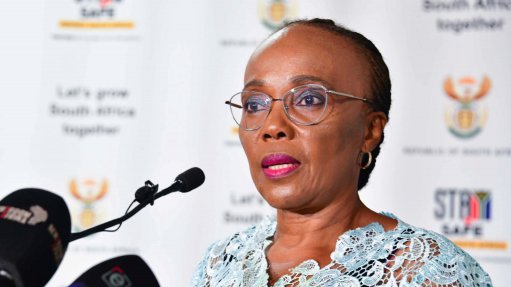
Transport Minister Sindisiwe Chikunga
The Draft National Public Transport Subsidy Policy recommends that funding for public transport be increased from the current 0.8% of gross domestic product (GDP) to 5% of GDP.
Compared with international trends and based on the level of public transport use in the country, South African society should not be spending more than about 7% of GDP on transport, but the draft policy argues that South African society pays about 12% of GDP, and, therefore, the difference is the efficiency backlog of the passenger transport system.
An increase in funding to 5% of GDP would initially help to eradicate the prevailing backlog, Transport Minister Sindisiwe Chikunga said in a briefing this week.
The Draft Public Transport Subsidy Policy was gazetted on February 23 for public comment.
The closing date for comments is March 31 and the relevant documentation can be accessed on the Department of Transport’s website.
Public transport receives disproportionately little funding relative to its role in the economy and society at large, and the enlarged public transport subsidies should be implemented to achieve specific goals in transport plans.
"There is consensus on the need to subsidise public transport in the country. However, it is proposed that such subsidisation must be outcome-based and guided by enabling interventions," she said.
Additionally, approved transport plans must be purpose-driven and transformative to achieve desirable outcomes, Chikunga said.
The draft policy document also states that public transport funding is done in isolation from other built environment initiatives, and operational subsidies are not differentiated in terms of operating conditions, but these issues need to be addressed.
"Under the draft policy, public transport will be cost-recovery-based and a subsidy will only be allocated to cover the cost of providing services above what is deemed affordable to users, limited to what is affordable to the State," she explained.
A public transport subsidy will comprise operational and capital support. The user-targeted operational component will target poor households, and the capital subsidy component will target infrastructure and assets.
Information technology will be used to increasingly administer operating subsidies, she added.
"There will be no mode-specific financing, but rather a subsidised network that will be serviced by a combination of modes to minimise the cost of transport. There will, however, be differentiation between urban and rural areas."
Further, the public transport subsidies will be managed by municipalities, although governance and administration require that no municipality should be a public transport operator, she added.
The draft policy also proposes that subsidisation of public transport should be subject to a formula that categorises municipalities in terms of population and travel generation.
"Subsidisation of public transport should be implemented through approved transport plans. The plans must mainly be responsive to strategic needs in municipalities. Therefore, the practice of dispensing public transport subsidies purely on an historical basis should come to an end. This is because such a practice incentivises inefficiencies," Chikunga said.
"To create stability, the plans must be generated for a five-year horizon in the case of operational subsidies and ten years for capital subsidy. These plans should be subject to annual reviews," she added.